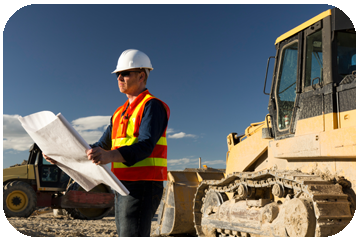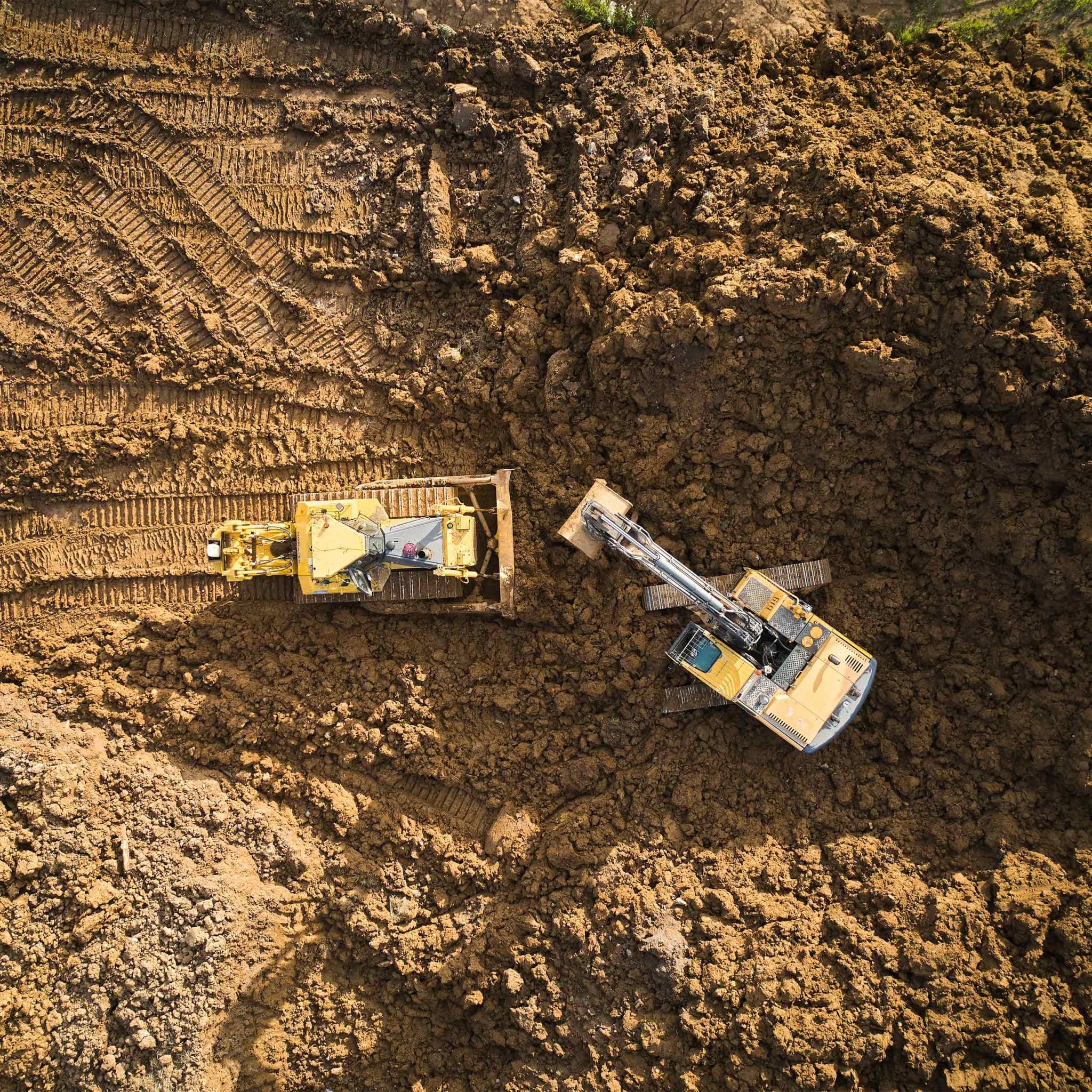An In-Depth Check Out the Scope of Practice for Geotechnical Engineers and Their Impact on Task Feasibility and Danger Reduction
The extent of practice for geotechnical designers incorporates a range of vital obligations that straight affect task usefulness and risk monitoring. From performing comprehensive site investigations to examining subsurface conditions, their expertise is vital fit structure layout and construction strategies. As projects increasingly experience intricate geological obstacles, understanding the nuanced role of these experts ends up being imperative for guaranteeing effective end results. However, the implications of their work prolong past simple analysis; they can dramatically modify the trajectory of a job. What particular methods do geotechnical engineers employ to navigate these intricacies successfully?
Roles and Obligations of Geotechnical Engineers
Geotechnical engineers play a crucial role in the structure of building jobs, making sure that frameworks are improved strong ground. Their obligations include a variety of activities vital for analyzing dirt and rock residential or commercial properties, which straight influence job expediency and safety and security. Geotechnical engineers conduct website examinations to gather vital data regarding subsurface conditions. This includes exploration boreholes, tasting soil and rock, and conducting in-situ examinations to identify material qualities.

Partnership is additionally a vital element of their role; they work closely with civil designers, engineers, and environmental specialists to ensure that geotechnical factors to consider are incorporated into total project preparation. Eventually, the proficiency of geotechnical designers is crucial in promoting the safety, sustainability, and feasibility of building and construction undertakings.
Key Locations of Geotechnical Evaluation
Dirt examples and geological surveys are foundational elements in the crucial locations of geotechnical evaluation. These activities supply important data relating to the physical and chemical residential or commercial properties of the subsurface products, enabling engineers to evaluate website conditions accurately. The evaluation generally incorporates dirt category, compaction, shear strength, and permeability, all of which are important for recognizing the behavior of soils under numerous loading problems.
An additional considerable location of emphasis is incline stability analysis, which examines the threat of landslides or dirt erosion. This includes analyzing the geometry of inclines, soil types, and groundwater problems. Website characterization is also important, as it involves a detailed investigation of the site's history, including previous building, contamination, and all-natural risks.
In addition, groundwater analysis plays a vital duty in geotechnical analysis, influencing both the style and construction stages. Understanding the groundwater table, circulation instructions, and potential fluctuations is necessary for effective foundation layout and stormwater management.
With each other, these vital areas of geotechnical evaluation form an extensive structure that notifies decision-making processes, making sure risk-free and sustainable design practices while reducing potential threats connected with subsurface problems.
Effect On Task Usefulness
The usefulness of a building and construction project pivots significantly on the understandings obtained from geotechnical examinations. These examinations give essential data relating to soil buildings, groundwater conditions, and subsurface characteristics, which are critical for establishing the suitability of a website for building. By assessing variables such as soil bearing ability, settlement possibility, and incline stability, geotechnical designers play a pivotal function in evaluating whether a job can continue as prepared or if alterations are needed.
Furthermore, the results of geotechnical research studies straight influence task style and building techniques. Precise geotechnical data permits notified decision-making, ensuring that structural layouts fit site-specific problems and abide by governing requirements. This procedure assists in maximizing resource allotment, therefore decreasing unexpected hold-ups and expense overruns.
In addition, a complete geotechnical analysis enhances the total viability of a task by determining potential difficulties early in the preparation stage. By attending to these obstacles proactively, stakeholders can enhance the task's chance of success, ensuring that it satisfies both economic and functional goals. In recap, the payments of geotechnical engineers are integral to establishing task expediency, thus laying the groundwork for effective task execution.
Threat Mitigation Techniques
While construction tasks naturally involve numerous uncertainties, applying reliable danger reduction techniques can significantly decrease prospective issues emerging from geotechnical elements. Geotechnical engineers play an essential function in determining, evaluating, and addressing dangers click for more info connected with subsurface problems, ensuring that jobs proceed smoothly and continue to be within budget.
One main approach includes thorough website examinations, which consist of dirt tasting, in-situ testing, and lab analysis. These assessments provide crucial information on soil structure, strength, and behavior, making it possible for engineers to develop foundations and earthworks that are both effective and secure. Furthermore, using sophisticated modeling strategies, such as limited aspect evaluation, enables engineers to forecast just how dirt and architectural communications might develop under different loading conditions.
An additional reliable reduction method is the application of proper style news alterations, such as using support methods or embracing alternative building and construction methods, which can boost stability and decrease vulnerability to geotechnical concerns. Furthermore, continuous monitoring of website conditions throughout building can help with timely treatments, therefore reducing the probability of unexpected issues.
Instance Research Studies and Real-World Applications
Study provide beneficial understandings right into the useful applications of geotechnical engineering concepts and highlight the efficiency of danger reduction techniques in real-world circumstances. One significant example is the construction of the Millennium Dome in London, where cutting-edge ground therapy strategies were applied to address difficult dirt conditions. By employing deep cement blending and dirt stablizing approaches, engineers efficiently produced a steady foundation that reduced prospective negotiation risks, ensuring the project's usefulness.
Another situation is the stablizing of the hill for the brand-new highway in California, where substantial incline analysis and monitoring were used. Geotechnical designers utilized maintaining wall surfaces and drainage systems to handle groundwater, considerably decreasing the risk of landslides. This positive technique not just maintained the integrity of the highway yet also boosted public safety and security.
Moreover, the development of a major airport showed the importance of extensive site examinations. civil consulting engineers. Geotechnical engineers identified bothersome dirt layers and advised specific foundation layouts, bring about an effective project conclusion with reduced delays. These situation researches emphasize the crucial function that geotechnical engineers play in analyzing dangers and implementing efficient solutions, therefore improving task expediency and total success
Conclusion

By examining elements such as dirt bearing capacity, settlement possibility, and slope security, geotechnical designers play a critical role in evaluating whether a task can continue as prepared or if modifications are needed.
In recap, the contributions of geotechnical engineers are indispensable to developing task expediency, therefore laying the groundwork for reliable job implementation.
Geotechnical engineers determined bothersome soil layers and advised specific foundation styles, leading to a successful task conclusion with lessened delays. geotechnical industry. These case researches underscore the critical duty that geotechnical designers play in examining dangers and executing effective remedies, therefore improving job feasibility and overall success
With effective danger mitigation techniques and the application of advanced modeling methods, geotechnical engineers boost job outcomes and reduce threats associated to dirt and groundwater conditions.
Comments on “Exploring the Perks of Geo Tech Engineering for Urban Planning”